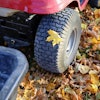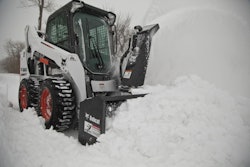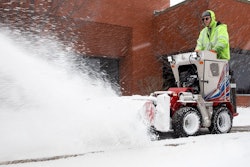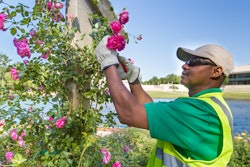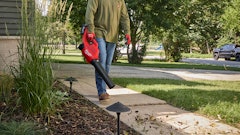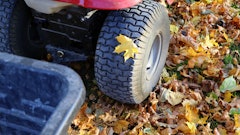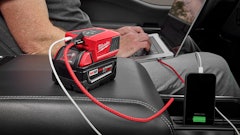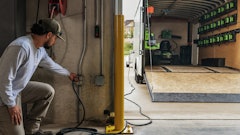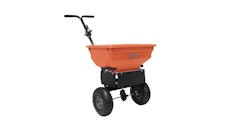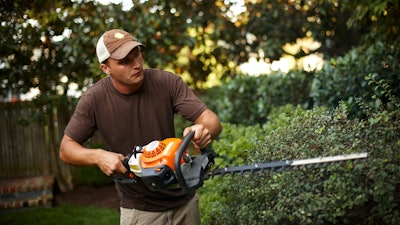
The key to creating a beautifully manicured, healthy hedge is using the right hedge trimmer.
Jeff Cartwright, owner of Cartwright Landscaping in Richmond, Virginia emphasizes the factors to consider when looking at using a hedge trimmer. He says to take into account what exactly you’re using it for and what you can use it for.
A proponent of Stihl himself, Cartwright said it is important to go with what you think is best.
Across the various manufacturers, there is a full line of single-sided, double-sided and pole hedge trimmers to fit the needs of specific job sites.
The question that always needs to be asked is: what are you cutting?
After considering usage and needs, Cartwright said hedge trimmer shoppers should, “Ask [their] respective dealers questions so [they] can become an educated consumer and get what fits for [them].”
He pointed out that it is not always “biggest is best.”
“As an owner, you might think, ‘Hey, I want to get the most powerful stuff for my employees and the most expensive,’ because maybe your mindset is that that’s going to be the best motor,” said Cartwright.
In his experience, too much power is actually a detriment because the RPMs run too hard and run too fast.
“You don’t need to buy the top-grade hedge trimmer if you don’t need that power,” he said. “It’s figuring out what you’re doing, how you are you using it and how often you are using it.”
Gas or Electric?
When you’re comparing gas to battery power, you’ll need to look at emissions, noise, vibration and other factors.
ECHO product manager Brad Mace said a landscaper’s decision to go with electric or gas often revolves around requirements by the customer that may require use of battery products due to noise or environmental concerns. He believes that plays more into it than the landscaper’s own preference.
In general terms, it can be a big moment for a landscape contractor to make the switch from what they know to that which they don’t or in other words, gas to battery.
“It’s exciting because with the hedge trimmer as we talked to landscapers who have converted over to the battery power of EGO, they’re all saying that it’s just such a better experience than holding on to a fumes-spewing monkey, it’s just night and day,” EGO director of excitement, Gerry Barnaby said.
 Husqvarna’s transition between gas and battery tools is generally a replacement of the power source, while everything else remains the same. From a performance stand-point, the tools are nearly equal.
Husqvarna’s transition between gas and battery tools is generally a replacement of the power source, while everything else remains the same. From a performance stand-point, the tools are nearly equal.
“If you take away the perceived negative benefits of gas equipment, it is still a very efficient, convenient way to operate a piece of equipment,” Oregon Products business director, Josh Huffman said. “If you’re a smaller landscaper, and maybe you don’t have access to the upfront capital costs to purchase a battery, you’re going to be hard-pressed to make a conversion.”
As far as performance, EGO, Oregon, Husqvarna and Stihl all say their battery-powered hedge trimmers are nearly equal in performance to their gas-powered equivalents.
Easterly noted that Husqvarna’s transition between gas and battery tools is generally a replacement of the power source, while everything else remains the same to maintain familiarity for the end-user.
“To keep it simple and for any user it’s not anything brand new to get used to,” he said.
“With the gas-powered units, there’s a little bit more power if you’re trying to cut materials similar in diameter to a broomstick or things that you probably shouldn’t be cutting with a hedge trimmer,” Easterly said, noting that with the petrol units there might be slightly more power but as far as cutter teeth per-minute speed and commercial maintenance application, the performance is equivalent or greater in some cases.
Huffman said Oregon Products has focused on answering that question of performance. He said the company’s 120 V professional series hedge trimmer is at least equivalent, if not more powerful, than a comparable 30 to 35 cc gas hedge trimmer.
A fan of battery-powered equipment, Cartwright uses them at his home but not for his company Cartwright Landscaping.
“The primary reason is that it’s just one more thing for me to have to manage as far as keeping track of batteries, making sure the batteries are charged, holding my people accountable for charging the batteries and so on and so forth,” he said. “It’s hard enough to keep everything else in line (blades sharpened, etc.), and it’s just one thing I don’t want to have to deal with.”
Cartwright noted that the daily hustle and bustle is enough without adding the worry of ensuring batteries are being charged.
“I don’t know, it’s just not where my mind is as a business owner,” he said. “On the flip side, I think there are restrictions in certain areas and noise ordinances in different parts of the country, and the battery-powered machines are a lot quieter.”
Easy Fix
The next challenge is maintenance, which is a huge piece, especially for the commercial landscapers.
Barnaby said for the battery-powered EGO hedge trimmer, the recommendation is to lightly oil the blades after every use. Also, he said users should grease the gearbox every 50 hours to maintain performance and life.
“There is no tune-up, there are no additives, there’s nothing except a ‘go’ button – and that is in the throttle, which is wide open every time,” he said.
Despite those factors, for the contractor, there’s a comfort level with gas tools. Whether they have a mechanic on-staff or they use a dealer, they know someone can fix it if it does break.
“We know there’s more maintenance with gas equipment than there is with the battery-powered tools,” Huffman said. “You’ve got air filters and pull cords and spark plugs and you have to replace pistons and rings and all that fun stuff.”
Ultimately, there are about half as many moving parts in a battery-powered unit.
“There are more things that can go wrong in a gas-powered engine, simply because there are more moving parts that you really won’t have with battery-powered, you really just have a motor, maybe a small gearbox and then right to the blades,” Easterly said.
Landscapers and their crews need only learn how to turn the unit on and off and what the various indicators for low battery or other issues mean.
“There’s another aspect to this durability question which is, you know, everything eventually is going to break or wear out, but can I get it fixed?” Huffman said.
Huffman said for Oregon’s equipment, there are three things that can go wrong: the motor, the controller or something in a switch or wiring harness.
“We think we’ve built pretty good equipment in which things aren’t going to fail that often,” he said.
All Oregon tools come with what resembles a chainsaw scrench tool that allows access to the motor and controller. Digital LED dashboards show the battery charge and, based on designated indicators, whether it is the motor, controller or a switch that is faulty at any given time.
“We consider the tools to be fully serviceable with a simple replacement of some major components,” said Huffman.
Out of Gas
With hedge trimmers and more, the difference is between the gas and battery start. Among the top concerns for landscapers is ease of starting their outdoor power equipment and how long it will operate.
“These guys are starting tools all day long,” Mace noted.
“We’ve all seen the people doing the ‘dance of death,’ I call it, as they try to start any two-stroke engine,” Barnaby said. “A lot of times it’s just pull, pull, pull, choke, throw the machine to the ground, say a few choice words, come back a few minutes later after it’s flooded itself and try to get it going again. The EGO trimmer starts up the first time, every time.”
Mace counters that the ECHO hedge trimmers have the spring assist starter which helps turn over the engine for an easier start.
In addition, a gas unit will run continuously as long as the tank is refilled throughout the course of the day.
How long a battery-powered tool will last remains a common question asked of dealers and manufacturers.
Huffman said Oregon reverses the question and asks landscapers how long they need the tool to last.
“The answers that we get tends to be based on perception rather than reality,” he said.
Landscapers will calculate it in their head, figuring crews get out to a site at 6 or 7 a.m. and start trimming hedges and they take a little lunch break, plus driving out to a site. Over an eight-hour period they may estimate five hours of trimming.
“That’s perception, because in reality, when you put a trigger timer device on that tool and you follow them around for a day, actual trigger time is usually less than an hour over a full eight-hour work day,” Huffman said. “The reality is that we’re correct when we say you can go multiple days in most applications on one battery with our hedge trimmer. Obviously when you are using a hedge trimmer, you’re not constantly pulling the trigger.
Talking to commercial landscapers who have utilized EGO commercial tools, Barnaby said they report getting three days of trimming out of one battery change, since not many people are trimming all day, every day.
EGO, Oregon, Stihl and Husqvarna each have battery systems that the user wears on their back and is designed to last all day (or as close to all day as possible). Other options are the single-battery tools from most manufacturers as well, that also have extended runtimes.
“The idea is, you don’t want to be out there charging it while you’re trying to cut grass or trim hedges,” Huffman said. “You want it working for you or charging while you’re at home getting your own recharge – which is sleeping.”
With most of the battery-powered units, one battery will likely last you across the course of a day or, if you have two batteries for one piece of equipment, you essentially have infinite runtime when using one battery while the other is charging.
“Run time varies a lot, but generally it’s very similar to as if they were to run out of fuel with their piece of equipment, they’re going to be back at the trailer truck and either be swapping a battery or refilling,” Easterly said.
A Cut Above
On hedge trimmers, landscapers have a determination to make with both blade length and handheld or shafted (pole) style.
“It takes a little bit of consideration on that because you don’t want to get the wrong size for your job,” Mace said, noting that the longer the unit, the harder it may be to use, and the longest shafted units are heavier and not as maneuverable.
“You can’t just say ‘I’m just going to get the longest one because I’ve got a big job coming up,’” he said. “It’s a tough decision and a lot of times, landscapers will carry several different options on their trailers.”
Mace explained that it really comes down to application.
If a landscaper is trimming small bushes around someone’s home versus a long row of six- or eight-foot hedges around a retirement community in Florida, it takes two different styles of hedge trimmers.
“It would be hard to get those tall Florida hedges with a handheld hedge trimmer and you might want to get to a shafted unit,” he said.
According to the experts, there is a growing trend toward use of shafted or pole hedge trimmers.
Some landscaping companies view them as inherently safer with the blade being further away from the user’s body, leaving less opportunity for the blade to impact the left leg, the most common type of accident with hedge trimmers.
Similar to determining shafted or pole, blade style, double-sided or single-sided, the decision comes down to user preference and tends to be very regional. Cut capacity is something to consider but is generally similar across the board.
Single-sided hedge trimmers typically have a debris shield that helps push the debris in front of the bush instead of leaving cut pieces on top that have to be cleared off later.
“I’d say in the majority of the country, you’re not going to find a single-sided hedge trimmer at all,” Mace said. “It’s very regional, and it’s [often based on] what the user grew up using. It’s hard to get people that grew up using a double-sided hedge trimmer to switch to a single and vice versa.”
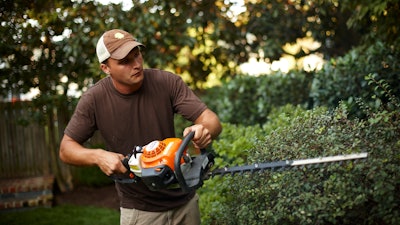 Cartwright Landscaping in Richmond, Virginia is a proponent of Stihl products. His trailers carry a mix of Stihl trimmers to ensure the crew always has the right one for the job.
Cartwright Landscaping in Richmond, Virginia is a proponent of Stihl products. His trailers carry a mix of Stihl trimmers to ensure the crew always has the right one for the job.
“[You need trimmers of varying pole lengths] if you’re dealing with different shrubs, different trees and hedges at different heights,” he said.
Also, Cartwright said they have two Stihl KombiMotor systems that allow for multiple attachments including extensions to get super-long hedge trimmers.
“We cover everything across the board with regard to different tasks and having the right tools to address the respective tasks,” he said.
Noise and Emissions Safety
No matter the outdoor equipment tool, noise is always a factor. More municipalities and some states are coming down with stricter enforcement on use of certain types of products.
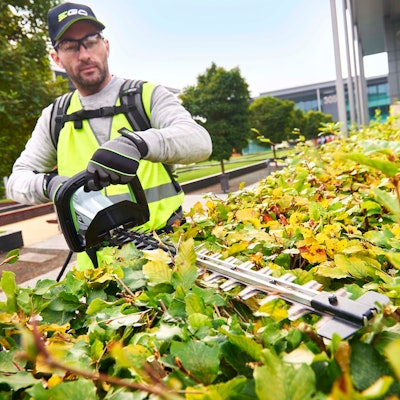 Service for the battery-powered EGO hedge trimmer is to lightly oil the blades after each use and grease the gearbox every 50 hours or so.
Service for the battery-powered EGO hedge trimmer is to lightly oil the blades after each use and grease the gearbox every 50 hours or so.
“If you want to get technical, the EGO commercial hedge trimmer is rated at 85 dB, which is about the sound of freeway traffic, maybe 100 feet off the freeway, so nothing overwhelming,” he said. “[But the noise is] going to be there, and we always recommend you use ear protection.”
However, Barnaby noted if he was going to be trimming hedges all day, he would be listening to National Public Radio or something on a headset.
“I’m not going to sit there listening to the hedge trimmer but still it’s going to be a markedly better experience as far as emissions and noise,” Barnaby said.
Another common issue is the exhaust fumes from the gas trimmer getting right in the face of the user.
“You go to work every day to earn an honest wage, but you don’t want to kill yourself in the process and I’m talking literally,” Barnaby said. “Think about what you’re breathing coming out of any two-stroke engine that is within a foot of your face.”
With a gas hedge trimmer, he said the components that release fumes are up near your face, because that is the posture most people have when using a hedge trimmer. Hedges are three or four feet tall, so the trimmer is right at face-level.
“Why would we voluntarily put our face in the proximity of a tailpipe every day? It’s time to try battery power and see for yourself how much better the experience is, and you’re not sacrificing an inch when it comes to performance,” said Barnaby. ›




